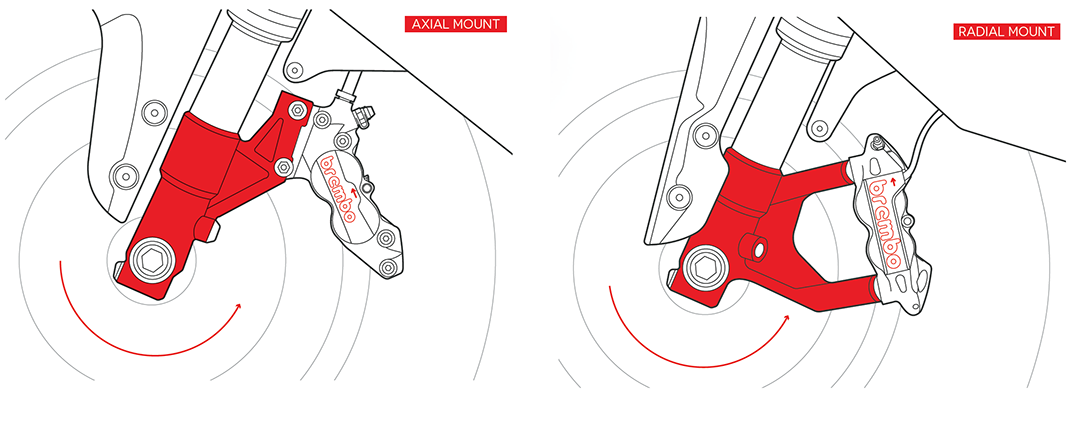As for the concept of radial attachment calipers, we have to wait until 1998. It would in fact be Valentino himself to be one of the first to try out the Brembo caliper in the winter of 98, destined to revolutionize braking systems and go into competition with Aprilia 250.
Mechanically, radial coupling allows greater rigidity in the caliper, which, following the disc in the rotation phase, is subject to less mechanical stress, and consequently less deformation.
Radial attachment moreover makes it possible to oppose resistance to the torque - resistance that is much superior to that on an axial caliper, because it reduces to a minimum elastic deformations, which absorb energy in the braking system. Exploiting the connection on the fork - the so called ''foot'' - the radial caliper stiffens not only the caliper itself but the whole braking system, with an appreciable improvement in performance.
The new concept of caliper, along with a positioning of the brake pads which is better defined in relation to the disc, gives the pilot greater sensitivity in braking, and also allows the diameter of the brake disc to be increased very easily. Since then the Doctor has never ceased to put trust in radial calipers, first in 250, then in 500, and then in MotoGP.
As a matter of fact, when he went into the premier class in 2000, Brembo was already producing the specific radial models for Valentino's Honda. The Japanese company had insisted on them after admiring the great benefits Suzuki had enjoyed in 1999.

